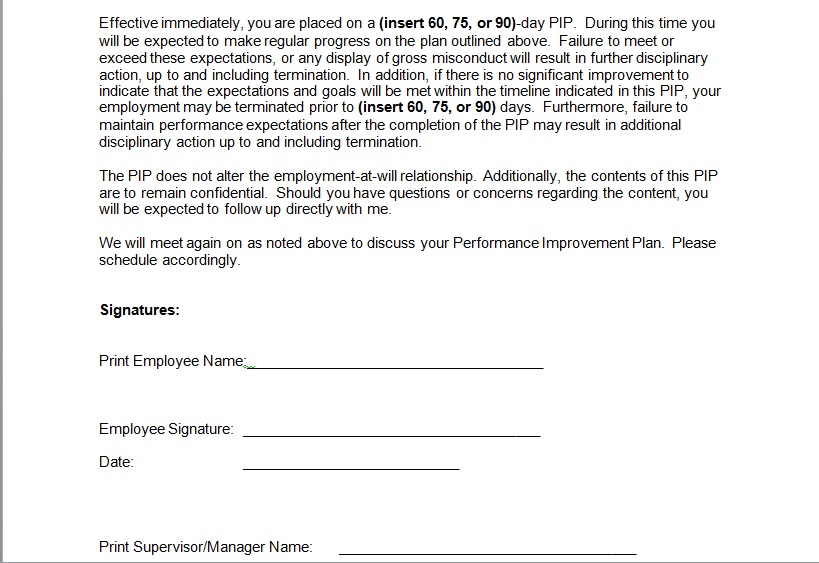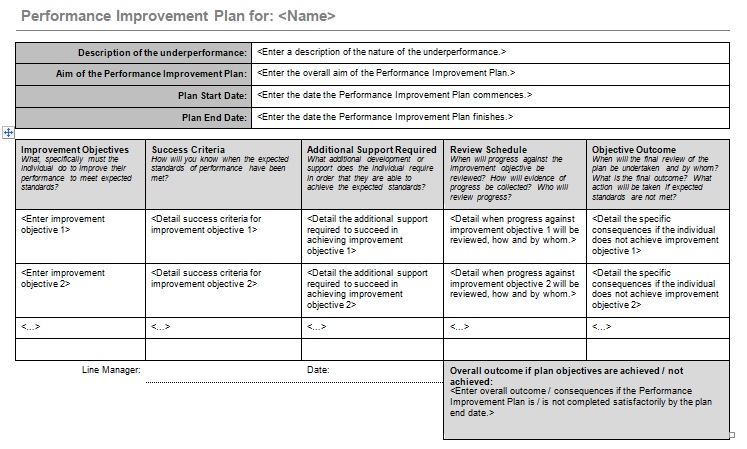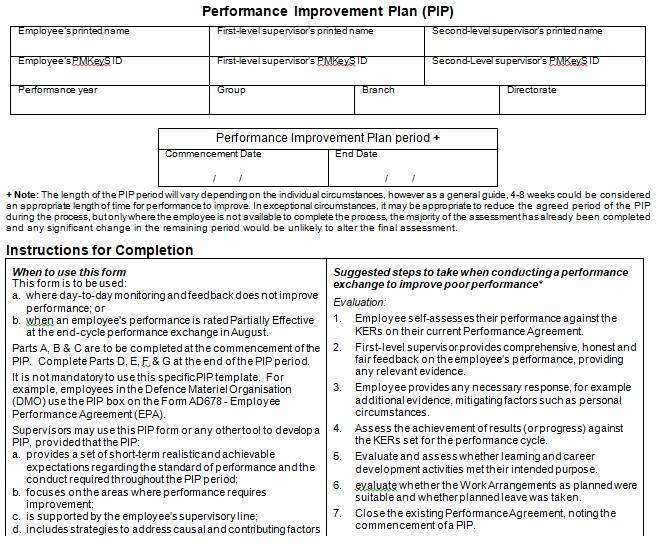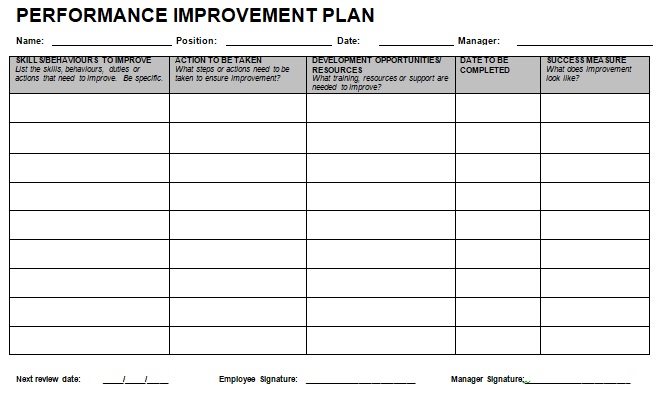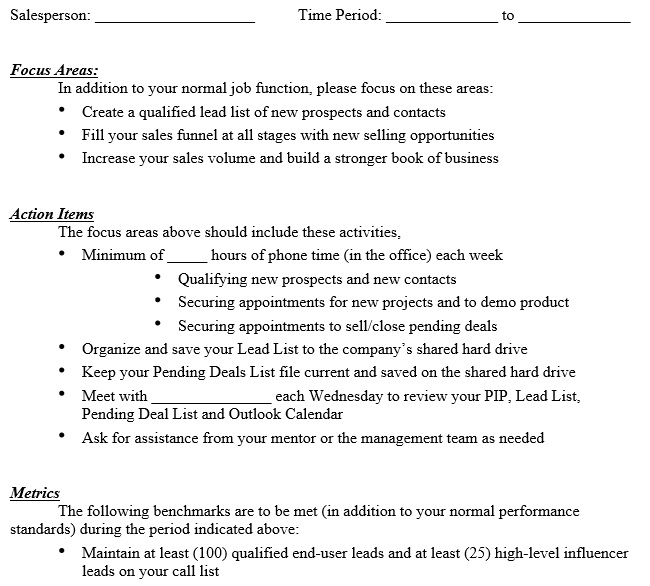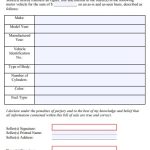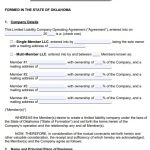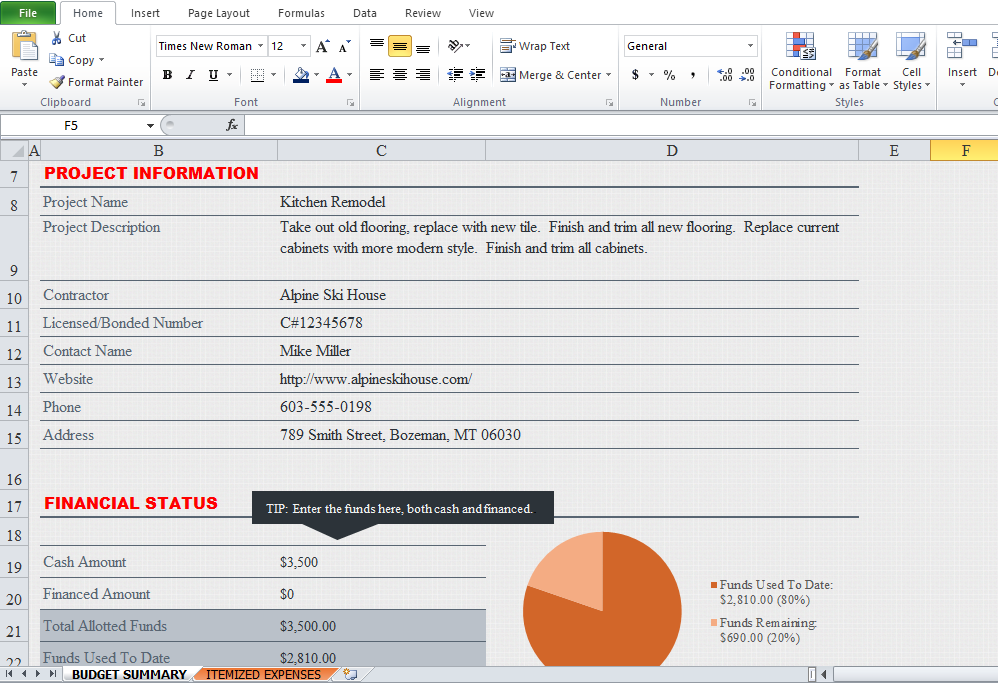A (PIP) performance improvement plan template (Word, PDF) as well as acknowledged as a performance action plan is a great and superb method to provide struggling workers the chance to do well while still holding them responsible for past performance. It is not always obvious why a worker has a poor presentation. Did he or she not get suitable training?
Does the member of staff not recognize the expectations of the work? Are there unexpected roadblocks in the way? Thus, it is basic to consider an open exchange and criticism from the representative to figure out if the worker has been given all the apparatuses and assets essential for him or her to be fruitful. You may also check the risk management plan template.
Employee performance improvement plan template hr might be utilized to deliver either disappointment to meet particular employment execution related issues or conduct related concerns. PIP may prompt a few unique results, incorporating change in general implementation, the acknowledgment of abilities, or preparing whole or conceivable livelihood activities, for example, exchange, downgrade, or end.
Then again, a PIP might be utilized for representatives who might be new to a part as a device to impart execution desires. You may also like facility maintenance checklist template.
Table of Contents
What Is a Performance Improvement Plan (PIP)?
A Performance Improvement Plan (PIP) is a formal document that outlines specific areas where an employee’s performance is lacking and sets measurable goals for improvement within a defined timeframe.
The purpose of a PIP isn’t to punish the employee but to help them succeed by providing clear expectations, support, and regular feedback. It’s a collaborative effort between the manager and the employee aimed at achieving better performance outcomes.
Why Is a Performance Improvement Plan Important?
A well-structured PIP can benefit both the employee and the organization. Here’s why it’s so important:
1. Clarifies Expectations
Employees often underperform because they’re unclear about what’s expected of them. A PIP eliminates confusion by outlining clear performance goals and measurable objectives.
2. Encourages Accountability
When employees have a written document stating what needs to improve and by when, it fosters accountability. They understand that their performance is being monitored and that improvement is necessary.
3. Provides Structured Support
A good PIP includes resources, coaching, and check-ins to help employees improve. It’s not just about pointing out problems but also providing the tools and guidance they need to succeed.
4. Enhances Manager-Employee Communication
The process of creating and reviewing a PIP opens the door for honest communication. It helps both sides align on expectations and discuss any underlying issues affecting performance.
5. Reduces Turnover and Legal Risks
By documenting performance issues and efforts to improve, employers reduce the risk of wrongful termination claims. At the same time, a PIP can save a valuable employee who might just need direction and feedback.
Examples of Performance Improvement Plan Template For Project Manager
The initial phase in the PIP methodology is for the supervisor to report the ranges of the representative’s execution that need change. In recording the principle execution issues, the boss ought to be objective, truthful, and particular and give certainties and cases to promote clear up the seriousness or example of execution concerns. You may also check the rental property expenses spreadsheet.
The case of nitty-gritty documentation is incorporated into two situations toward the end of this aide. At the point when building up an execution change arrangement, it is by and large a best practice to utilize a setup configuration to guarantee consistency in the data given to all representatives and to secure the business ought to lawful cases emerge sooner or later. You may also like a team meeting agenda template.
The configuration of the execution change arrangement will fluctuate by the manager and ought to incorporate the accompanying segments:
- Staff information.
- Relevant dates.
- Description of performance discrepancy or gap.
- Description of expected performance.
- Description of actual performance.
- Description of consequences.
- Plan of action.
- Signatures of the manager and the employee.
- Evaluation of the plan of action and overall performance improvement plan.
Key Elements of a Performance Improvement Plan Template
A strong Performance Improvement Plan should include the following sections:
1. Employee Information
Include the employee’s full name, job title, department, manager’s name, and the date the PIP begins.
2. Performance Concerns
List specific issues or behaviors that led to the implementation of the PIP. Avoid vague statements — instead, use data or examples to make it clear.
Example:
- Missed three project deadlines in Q3.
- Received customer complaints about delayed responses.
- Failed to meet monthly sales targets for two consecutive months.
3. Expected Performance Standards
Define what successful performance looks like. Each expectation should be measurable, specific, and realistic.
Example:
- Complete all assigned projects by deadlines.
- Respond to customer queries within 24 hours.
- Achieve a minimum of 90% of monthly sales targets.
4. Action Plan for Improvement
Outline the steps the employee must take to meet expectations. This section can also include support or resources the company will provide, such as training, mentoring, or job shadowing.
Example:
- Attend time management workshop by [date].
- Meet weekly with manager to review progress.
- Review company’s sales techniques manual.
5. Timeline
Clearly state how long the PIP will last typically 30, 60, or 90 days. Include key milestones or checkpoints during this period.
6. Progress Review Meetings
Schedule periodic meetings (weekly or biweekly) to review progress. Document feedback and any adjustments to the plan.
7. Consequences of Non-Improvement
Specify what will happen if the employee does not meet the outlined goals by the end of the PIP period. This could range from an extension of the plan to termination.
8. Signatures
Both the manager and the employee should sign the PIP document to acknowledge understanding and agreement.
Performance Improvement Plan Template (Editable Example)
Here’s a ready-to-use example you can adapt:
Performance Improvement Plan (PIP) Template
Employee Name: ____________________________
Job Title: _________________________________
Department: ______________________________
Manager Name: ____________________________
Date of Issue: _____________________________
1. Performance Issues Identified
| Area of Concern | Description | Evidence/Examples |
|---|---|---|
| Timeliness | Missed deadlines on multiple projects | Project A – Due 9/15, Completed 9/25 |
| Quality of Work | Frequent errors in reports | 4 reports returned for corrections in October |
| Communication | Lack of follow-up with clients | 3 unresolved client complaints |
2. Expected Performance Standards
| Objective | Success Criteria | Deadline |
|---|---|---|
| Complete projects on time | 100% deadlines met | 60 days |
| Improve report accuracy | Fewer than 2 corrections per month | 60 days |
| Enhance client communication | Respond to all clients within 24 hours | 60 days |
Printable Free Performance Improvement Plan Template
Performance Improvement Plan Example
Sample Performance Improvement Plan
Completed Performance Improvement Plan Example
Employee Performance Improvement Plan Template for Word
Personal Improvement Plan Template
Employee Performance Improvement Plan Template Excel
Sales Performance Improvement Plan Template
Step-by-Step Guide to Creating a Performance Improvement Plan
Here’s a detailed process for designing and implementing a PIP effectively.
Step 1: Identify Performance Gaps
Step 2: Communicate with the Employee
Step 3: Set SMART Goals
- Specific: Improve project completion rates.
- Measurable: Complete 95% of projects by deadline.
- Achievable: With new time management tools and training.
- Relevant: Aligns with department’s performance objectives.
- Time-bound: Within 60 days.
Step 4: Provide Resources and Support
Ensure the employee has access to all tools, training, or guidance necessary for improvement. Assign a mentor if needed.
Step 5: Monitor and Provide Feedback
Track progress regularly through check-ins or weekly reports. Offer constructive feedback, celebrating small wins along the way.
Step 6: Evaluate Results
At the end of the PIP period, assess whether the employee met expectations. If performance improves, acknowledge their success. If not, determine the next steps — extension, reassignment, or separation.
Common Mistakes to Avoid in a Performance Improvement Plan
- Vague Goals: Ambiguous objectives make it hard to measure improvement.
- Unrealistic Expectations: Goals should be achievable, not punitive.
- Lack of Follow-Up: Without regular reviews, the PIP loses effectiveness.
- Ignoring Employee Input: Employees should feel involved, not targeted.
- Treating PIP as a Form of Punishment: A PIP should be a developmental tool, not a disciplinary one.
Benefits of Using a Performance Improvement Plan Template
- Saves time and ensures consistency.
- Promotes fairness and transparency.
- Provides a structured approach for HR and managers.
- Helps employees clearly understand expectations.
- Reduces legal and compliance risks.
Conclusion
A Performance Improvement Plan Template is a vital HR tool that bridges the gap between current performance and expected results. When implemented thoughtfully, it helps employees enhance their skills, boosts morale, and improves overall productivity.
Rather than being a punitive measure, a PIP is a second chance for success — and with the right structure, communication, and support, it can lead to remarkable transformations in employee performance.
FAQs:
What is the main purpose of a Performance Improvement Plan?
The main purpose of a PIP is to help employees improve their performance by providing clear goals, measurable outcomes, and regular feedback.
How long should a Performance Improvement Plan last?
Most PIPs last between 30 to 90 days, depending on the complexity of the performance issues and the role of the employee.
Can an employee refuse to sign a PIP?
Yes, but it’s not recommended. Refusing to sign doesn’t stop the process — the manager can note the refusal and proceed with implementation.
Is a PIP the same as a disciplinary action?
Not necessarily. While it can be part of a disciplinary process, a PIP’s primary focus is development and improvement, not punishment.
What happens if an employee fails a PIP?
If performance doesn’t improve after the plan’s completion, the organization may take further steps such as extending the plan, reassigning roles, or termination.
Should HR be involved in a PIP?
Yes. HR ensures that the process is fair, compliant, and aligned with company policies.
Can a successful PIP improve career growth?
Absolutely! Employees who complete a PIP successfully often emerge stronger, more confident, and better aligned with company goals.


